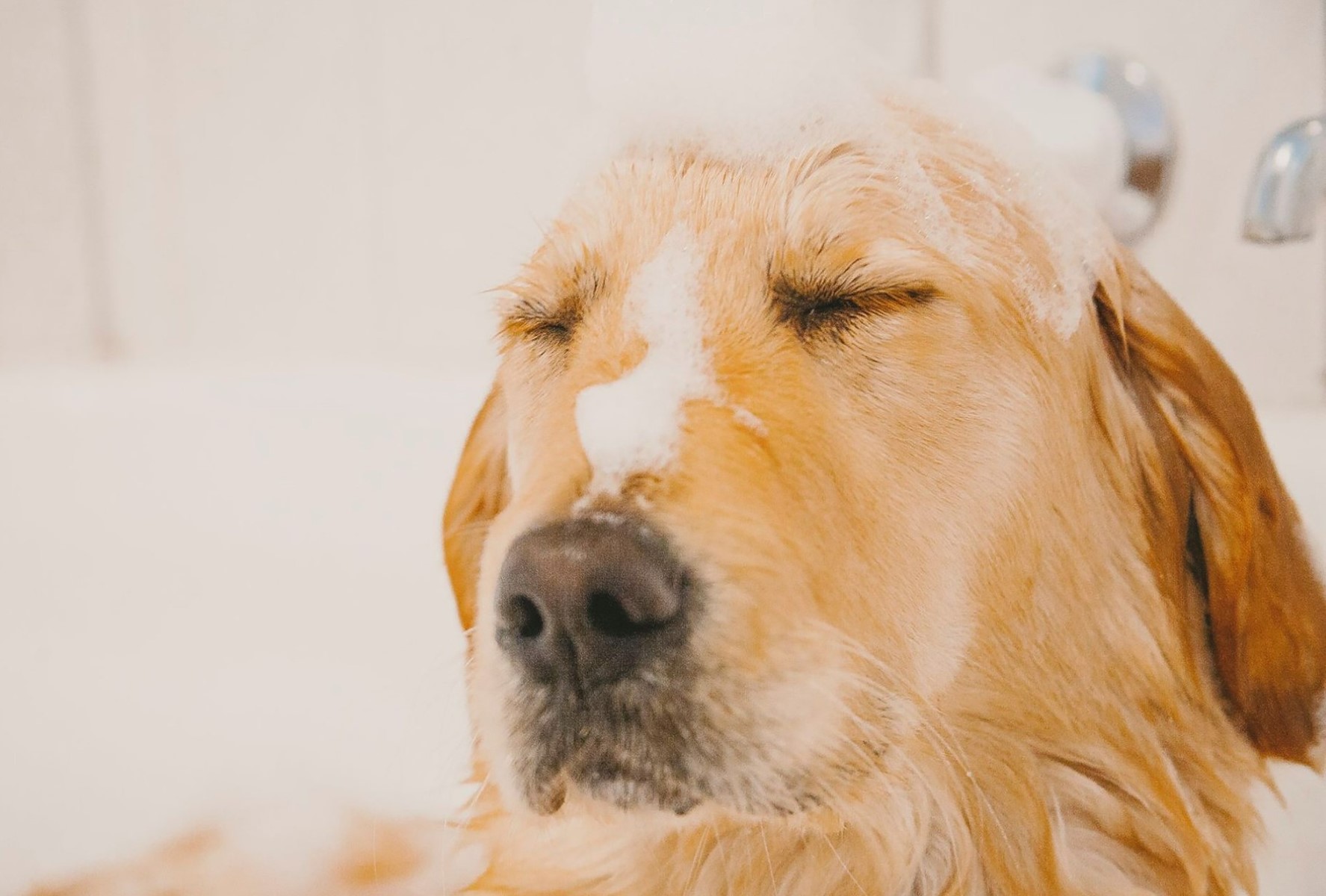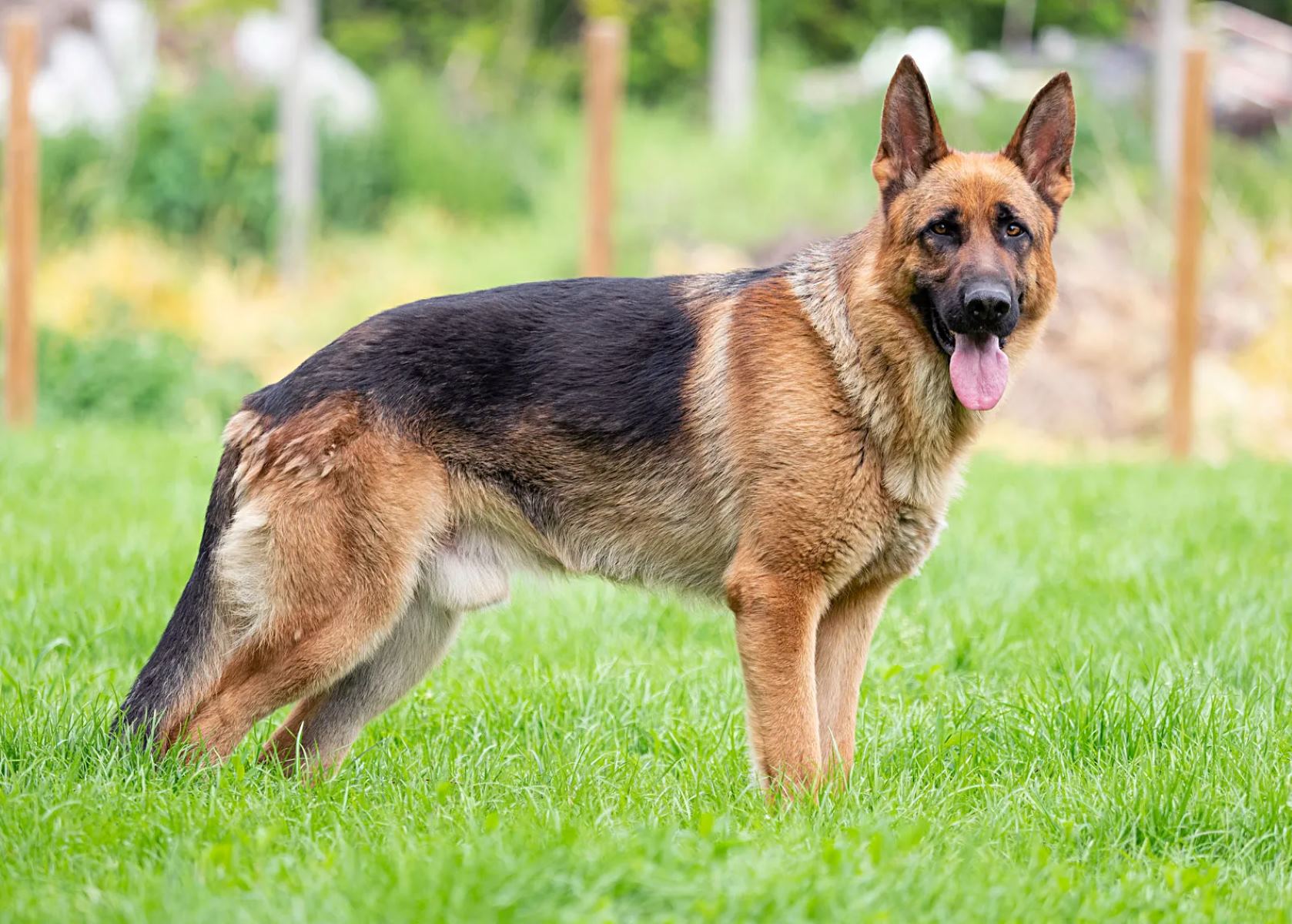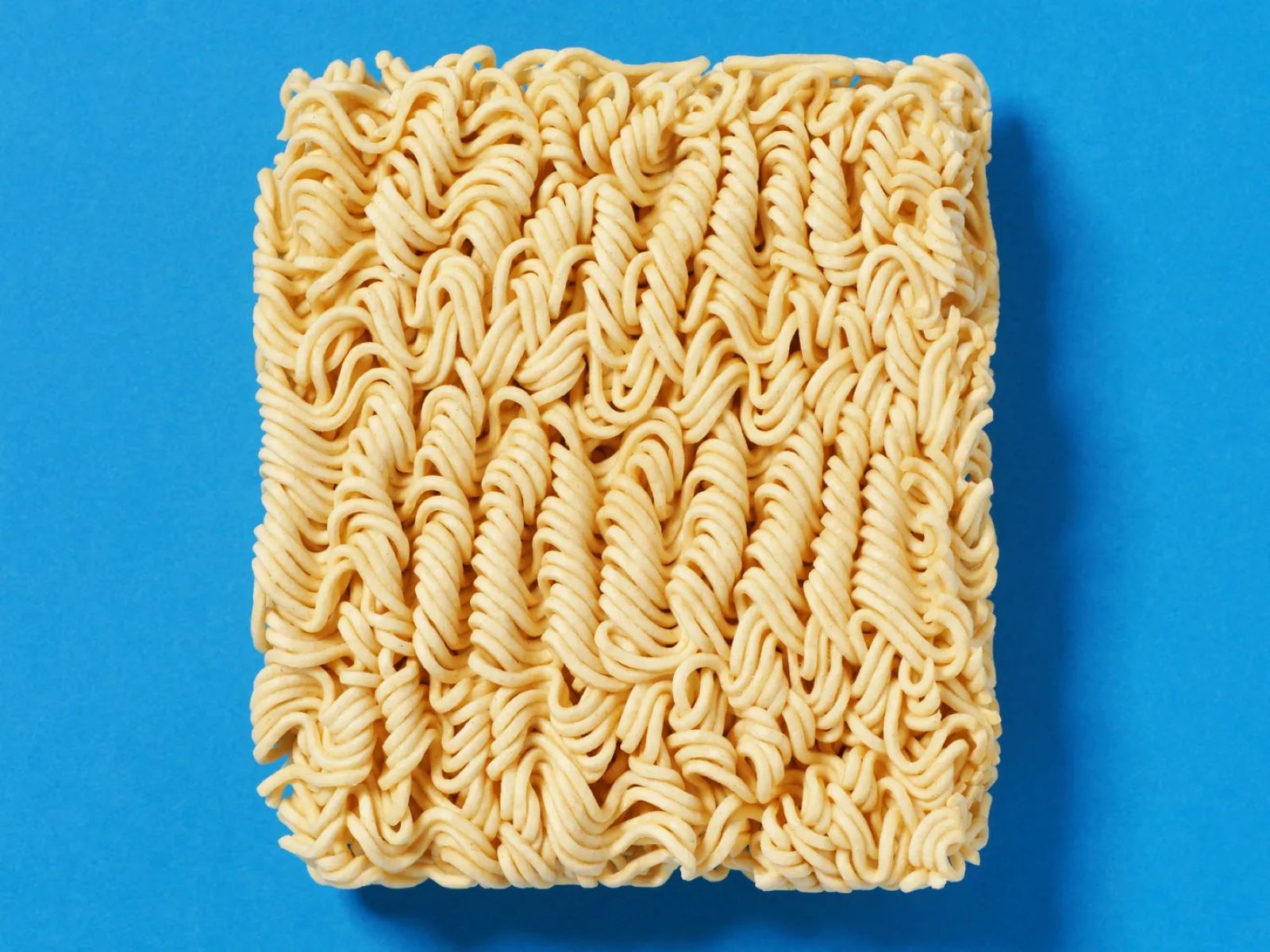Home>Health and Wellness>Miraculous Transformation: Watch How A Mango Worm Infection Transforms A Dog’s Fur!


Health and Wellness
Miraculous Transformation: Watch How A Mango Worm Infection Transforms A Dog’s Fur!
Published: February 4, 2024
Discover the miraculous transformation as a dog's fur undergoes a remarkable change due to a mango worm infection. Witness the incredible journey of health and wellness.
(Many of the links in this article redirect to a specific reviewed product. Your purchase of these products through affiliate links helps to generate commission for Regretless.com, at no extra cost. Learn more)
Table of Contents
Introduction
Welcome to the fascinating world of mango worm infection in dogs! This article delves into the extraordinary journey of a dog afflicted with this condition and the miraculous transformation it undergoes. Mango worm infection, caused by the larvae of the Cordylobia anthropophaga fly, is a captivating yet concerning health issue for our canine companions. As we explore the stages of this transformation, we'll gain a deeper understanding of the symptoms, treatment, and prevention methods associated with this intriguing phenomenon.
Prepare to be amazed as we unravel the captivating tale of a dog's encounter with mango worm infection and the remarkable process of its recovery. Through this journey, we'll witness the resilience of dogs and the dedication of veterinary professionals in restoring the health and well-being of these beloved animals. So, fasten your seatbelts and get ready to embark on an enlightening and awe-inspiring exploration of the mango worm infection transformation in dogs!
Understanding Mango Worm Infection
Mango worm infection, scientifically known as cordylobiasis, is a parasitic skin disease caused by the larvae of the Cordylobia anthropophaga fly. These flies are commonly found in sub-Saharan Africa and are notorious for infesting the skin of mammals, including dogs. The female fly deposits its eggs in soil, and when a potential host, such as a dog, comes into contact with the infested soil, the eggs hatch upon sensing body heat. The newly hatched larvae then burrow into the host's skin, initiating the parasitic relationship.
Once inside the host, the mango worm larvae feed on tissue fluids, gradually growing in size. As they mature, the larvae cause a range of distressing symptoms for the affected dog, including intense itching, swelling, and the formation of characteristic nodules under the skin. These nodules, often mistaken for tumors, are actually the larvae's breathing holes, through which they obtain oxygen.
Understanding the life cycle and behavior of the mango worm larvae is crucial in effectively addressing this infection. The larvae undergo several stages of development within the host's skin, ultimately leading to the formation of a small breathing hole through which they breathe and expel waste. This process continues until the larvae reach maturity, at which point they emerge from the host, drop to the ground, and pupate in the soil to complete their life cycle.
The infestation of mango worm larvae in a dog's skin can cause significant discomfort and distress. It is essential for dog owners and veterinary professionals to recognize the signs of this infection and take prompt action to alleviate the dog's suffering.
By gaining a comprehensive understanding of mango worm infection, we can better appreciate the challenges it poses for dogs and the importance of implementing effective treatment and prevention strategies to safeguard the well-being of our canine companions.
Symptoms of Mango Worm Infection in Dogs
The symptoms of mango worm infection in dogs can manifest in various distressing ways, reflecting the invasive nature of this parasitic condition. One of the most prominent signs is intense itching, as the larvae cause irritation and discomfort by burrowing into the dog's skin. This incessant itching often leads to the dog scratching or biting the affected areas, exacerbating the skin lesions and creating an open pathway for secondary bacterial infections.
As the larvae grow and develop under the dog's skin, swelling and the formation of characteristic nodules become apparent. These nodules, often mistaken for tumors, are the result of the larvae's presence and serve as their breathing holes. The nodules are typically accompanied by redness and inflammation, indicating the body's immune response to the parasitic invasion.
Additionally, affected dogs may exhibit signs of pain and discomfort, particularly when the nodules are touched or manipulated. The presence of mango worm larvae can cause tenderness and soreness in the affected areas, leading to behavioral changes such as reluctance to be touched or a decrease in overall activity levels.
In severe cases of mango worm infection, dogs may experience systemic symptoms, including fever, lethargy, and a decline in appetite. These systemic signs indicate a more advanced stage of infestation, where the dog's immune system is actively responding to the presence of the larvae and the associated tissue damage.
It is crucial for dog owners and veterinary professionals to be vigilant for these symptoms, as prompt identification and intervention are essential in mitigating the impact of mango worm infection on the dog's health and well-being. By recognizing these signs early on, appropriate treatment measures can be initiated to alleviate the dog's discomfort and prevent further complications.
Understanding the range of symptoms associated with mango worm infection empowers dog owners to take proactive measures in seeking veterinary care and implementing preventive strategies to safeguard their pets from this parasitic affliction. Through heightened awareness and timely intervention, the impact of mango worm infection on dogs can be minimized, allowing these resilient animals to embark on their journey towards recovery and restoration of their vibrant health.
The Miraculous Transformation Process
The miraculous transformation process of a dog afflicted with mango worm infection is a testament to the resilience and adaptability of these remarkable animals. As the larvae of the Cordylobia anthropophaga fly develop and mature within the dog's skin, a series of remarkable changes unfold, ultimately culminating in the dog's journey towards recovery and restoration of its well-being.
Initially, the presence of mango worm larvae triggers a cascade of distressing symptoms in the affected dog, including intense itching, swelling, and the formation of characteristic nodules under the skin. These symptoms reflect the invasive nature of the parasitic infestation and the profound discomfort experienced by the dog. However, as the treatment and healing process commences, a remarkable transformation begins to take shape.
Under the dedicated care of veterinary professionals, the affected dog undergoes a comprehensive treatment regimen aimed at eradicating the mango worm larvae and alleviating the associated symptoms. This treatment may involve the careful extraction of the larvae from the dog's skin, followed by meticulous wound care and administration of medications to address any secondary infections or inflammatory responses.
As the treatment progresses, the dog's resilience and innate healing capabilities come to the forefront, initiating a miraculous transformation within the body. The once-distressed skin begins to heal, and the swelling and nodules gradually diminish, signaling the successful elimination of the mango worm larvae and the restoration of normal tissue integrity.
Throughout this transformation process, the dog's demeanor and behavior also undergo a positive shift. The incessant itching and discomfort subside, allowing the dog to regain its vitality and zest for life. With each passing day, the dog's energy levels improve, and its playful and affectionate nature resurfaces, indicating a remarkable turnaround in its overall well-being.
The transformation culminates in the dog reclaiming its vibrant health and vitality, free from the burden of mango worm infection. Through the unwavering dedication of veterinary care providers and the dog's remarkable resilience, this miraculous process serves as a testament to the remarkable capacity for recovery and renewal inherent in our beloved canine companions.
As we witness this awe-inspiring transformation, we are reminded of the profound bond between humans and dogs, and the unwavering commitment to ensuring the health and well-being of these cherished animals. The miraculous journey from affliction to recovery stands as a testament to the resilience and strength of dogs, inspiring us to cherish and safeguard the precious lives of our canine companions.
The miraculous transformation process of a dog afflicted with mango worm infection serves as a poignant reminder of the profound impact of veterinary care and the remarkable resilience of dogs in overcoming adversity. It is a testament to the unwavering dedication of veterinary professionals and the boundless capacity for healing and renewal that exists within our beloved canine companions.
Treatment and Prevention
Effective treatment and prevention strategies play a pivotal role in addressing mango worm infection in dogs and safeguarding their well-being. Upon the identification of mango worm infestation, prompt and comprehensive treatment measures are essential to alleviate the dog's discomfort and facilitate its recovery.
Treatment
The treatment of mango worm infection in dogs typically involves the meticulous extraction of the larvae from the affected areas. This process requires precision and care to ensure the complete removal of all larvae, thereby preventing the risk of re-infestation and minimizing potential complications. Veterinary professionals employ specialized techniques and tools to extract the larvae while minimizing trauma to the surrounding tissues.
Following the extraction of the larvae, thorough wound care is essential to promote healing and prevent secondary infections. This may involve the cleansing and disinfection of the affected areas, as well as the application of topical medications to facilitate tissue regeneration and minimize inflammation. In cases where secondary infections have occurred, appropriate antibiotics or antiparasitic medications may be prescribed to address these complications.
Additionally, supportive care measures, such as pain management and nutritional support, are implemented to ensure the dog's comfort and overall well-being during the recovery process. Veterinary professionals closely monitor the dog's progress, adjusting the treatment plan as needed to facilitate a smooth and successful recovery.
Prevention
Preventive measures play a crucial role in mitigating the risk of mango worm infection in dogs. Dog owners are encouraged to minimize their pets' exposure to environments where the Cordylobia anthropophaga fly is prevalent, such as sandy or dusty areas. This can be achieved by ensuring that dogs have limited access to potential infestation sites and providing them with supervised outdoor activities in safe and controlled environments.
Regular grooming and inspection of the dog's skin are essential preventive measures, as they enable the early detection of any signs of infestation. Thoroughly examining the dog's skin for nodules, lesions, or signs of itching allows for prompt intervention and treatment, preventing the progression of the infestation.
Furthermore, the use of appropriate insect repellents and preventive medications, as recommended by veterinary professionals, can serve as an additional layer of defense against mango worm infestation. These preventive measures help to minimize the risk of exposure to the Cordylobia anthropophaga fly and reduce the likelihood of parasitic infestation in dogs.
By implementing a combination of vigilant supervision, preventive measures, and regular veterinary care, dog owners can significantly reduce the risk of mango worm infection and ensure the long-term health and well-being of their canine companions.
The integration of effective treatment and prevention strategies not only addresses the immediate impact of mango worm infection but also contributes to the overall health and resilience of dogs. By prioritizing the well-being of our pets and remaining proactive in safeguarding them from parasitic afflictions, we uphold our commitment to providing them with a fulfilling and vibrant life.
Conclusion
The journey of a dog afflicted with mango worm infection is a testament to the remarkable resilience and unwavering spirit of these beloved animals. Through the captivating tale of affliction, transformation, and recovery, we gain profound insights into the profound impact of veterinary care and the innate ability of dogs to overcome adversity.
As we reflect on the miraculous transformation process, we are reminded of the invaluable bond between humans and dogs, characterized by compassion, dedication, and unwavering support. The journey from affliction to recovery serves as a poignant reminder of the profound responsibility we bear in safeguarding the health and well-being of our canine companions. It underscores the importance of remaining vigilant, proactive, and empathetic in addressing the diverse health challenges that dogs may encounter.
The comprehensive understanding of mango worm infection and its impact on dogs empowers us to take proactive measures in recognizing the symptoms, seeking timely veterinary care, and implementing preventive strategies. By fostering heightened awareness and a deep sense of responsibility, we can create a supportive environment that nurtures the vitality and resilience of our cherished pets.
The dedication and expertise of veterinary professionals emerge as pivotal elements in the journey of recovery, underscoring the profound impact of their unwavering commitment to the well-being of animals. Their tireless efforts, combined with the resilience and strength of dogs, pave the way for a transformative healing process that inspires us to cherish and protect the lives of our faithful companions.
As we witness the miraculous transformation of a dog afflicted with mango worm infection, we are reminded of the enduring bond between humans and dogs, characterized by empathy, companionship, and unwavering devotion. This journey serves as a compelling narrative of hope, resilience, and the remarkable capacity for renewal that exists within these remarkable animals.
In closing, the journey of a dog afflicted with mango worm infection is a testament to the transformative power of veterinary care, the resilience of dogs, and the profound bond that unites us with our cherished companions. It serves as a poignant reminder of our shared responsibility to safeguard the well-being of animals, ensuring that they thrive in a world filled with compassion, care, and unwavering support.














